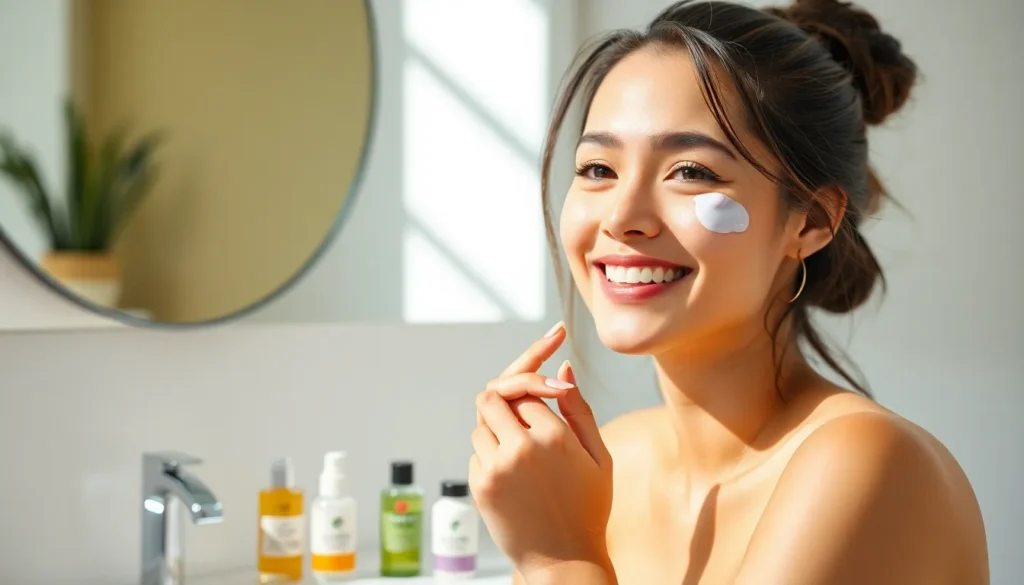Managing oily skin can feel like an endless battle against shine, clogged pores, and unexpected breakouts. We’ve all been there – trying countless products that promise to control oil production but end up either stripping our skin completely or making the problem worse. The truth is, oily skin needs the right balance of ingredients that regulate sebum production without compromising your skin’s natural barrier.
Finding effective skincare products for oily skin doesn’t have to be overwhelming when you know what to look for. The key lies in understanding which ingredients work best for your skin type and how to build a routine that actually delivers results. From gentle cleansers that remove excess oil without over-drying to serums that target enlarged pores, the right products can transform your complexion.
We’ve researched and tested the most effective skincare answers specifically designed for oily skin types. Our comprehensive guide will help you discover products that not only control shine but also improve your overall skin health and confidence.
Understanding Oily Skin and Its Unique Needs
Before we jump into product recommendations, let’s explore what makes oily skin different and why it requires specialized care to achieve optimal results.
What Causes Oily Skin
Sebaceous glands produce excess oil when they’re triggered by several key factors. Genetics plays the primary role, with family history determining your skin’s natural sebum production levels. Hormonal fluctuations during puberty, menstruation, pregnancy, and stress significantly increase oil output through androgen activity.
Environmental factors like humidity, heat, and pollution stimulate additional sebum production as your skin attempts to protect itself. Overwashing or using harsh products paradoxically triggers more oil production as your skin compensates for stripped natural barriers.
Age influences sebum levels too, with peak production occurring during teenage years and gradually decreasing after age 30. Certain medications including birth control pills and corticosteroids can also elevate oil production as side effects.
Signs You Have Oily Skin
Visible shine appears on your face within 2-3 hours of cleansing, particularly across the T-zone (forehead, nose, and chin). Enlarged pores become noticeable, especially around the nose area where sebaceous glands concentrate most densely.
Makeup tends to slide off or separate throughout the day, requiring frequent touch-ups to maintain coverage. Blackheads and whiteheads form regularly as excess oil mixes with dead skin cells and clogs pores.
Blotting papers reveal important oil absorption when pressed against your skin mid-day. Your skin feels thick or rough to the touch, and you may experience frequent breakouts or acne flare-ups in oil-prone areas.
Common Misconceptions About Oily Skin Care
Skipping moisturizer represents the biggest mistake people with oily skin make, believing it’ll reduce shine. Dehydrated oily skin actually produces more sebum to compensate for lost moisture, creating a cycle of increased oiliness.
Over-cleansing doesn’t solve oil problems but instead strips your skin’s protective barrier, triggering rebound oil production. Many people assume they need alcohol-based products to “dry out” their skin, but these ingredients cause irritation and inflammation.
Oil-free products aren’t always superior for oily skin types. Beneficial oils like jojoba and squalane can actually help regulate sebum production and maintain healthy skin barrier function.
Aggressive scrubbing and daily exfoliation seem logical but damage the skin’s surface, leading to increased sensitivity and more oil production as your skin attempts to heal itself.
Essential Cleansers That Control Oil Without Over-Drying
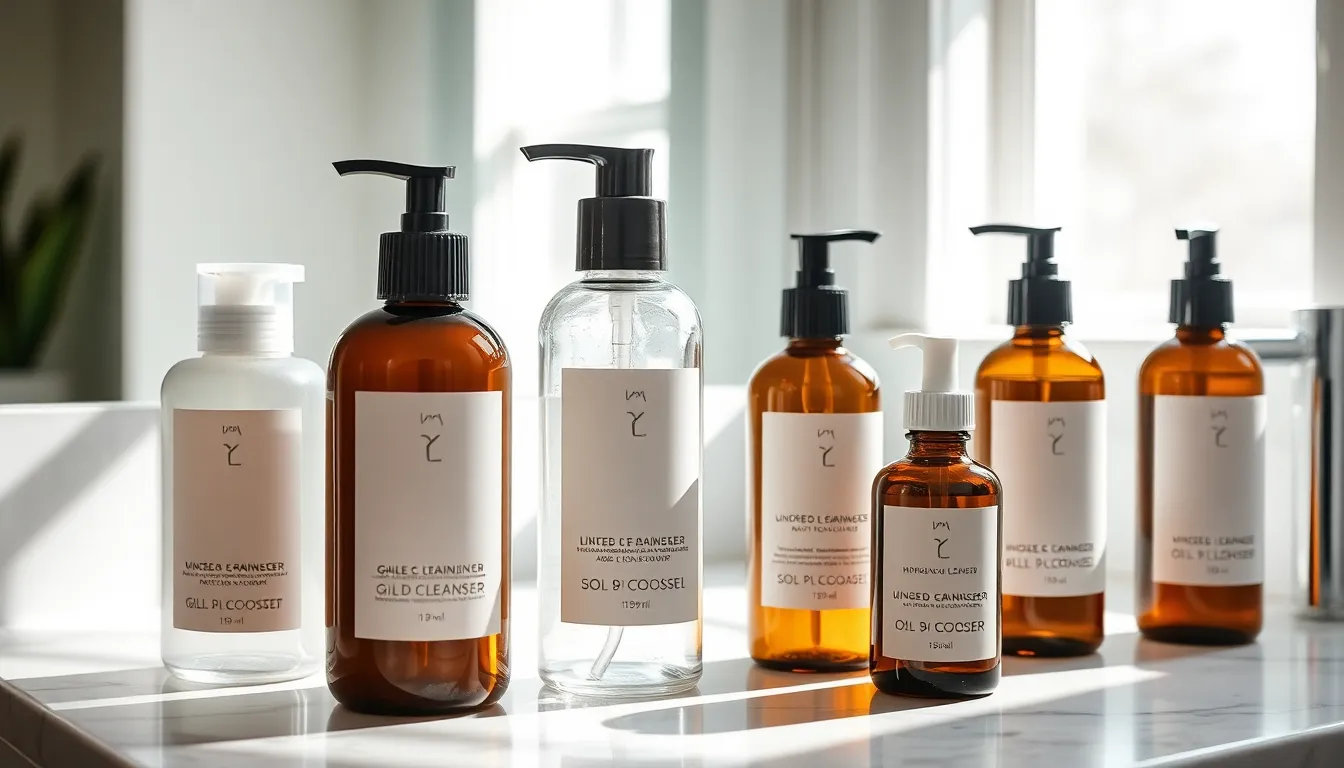
Finding the right cleanser creates the foundation for managing oily skin effectively. We’ve identified three distinct categories that excel at removing excess oil while preserving your skin’s natural moisture barrier.
Gel-Based Cleansers for Daily Use
Gel cleansers offer lightweight formulations that won’t weigh down oily skin types. These products maintain your skin’s healthy pH balance while providing gentle daily cleansing action. CeraVe Foaming Facial Cleanser stands out with its ceramides, hyaluronic acid, and niacinamide blend that removes excess oil without disrupting your skin’s natural barrier. Daily use of gel based formulas helps regulate oil production throughout the day.
Lightweight textures make these cleansers perfect for morning and evening routines. Most gel cleansers absorb quickly and leave skin feeling fresh rather than tight or stripped. Regular application helps maintain balanced hydration levels that oily skin actually needs to function properly.
Foaming Cleansers for Deep Cleaning
Foaming cleansers deliver thorough pore cleansing that removes dirt and excess sebum effectively. La Roche-Posay Effaclar Purifying Foaming Gel Cleanser excels at purifying and balancing oily skin without over drying. These formulations create rich lathers that lift impurities from deep within pores.
Deep cleaning action makes foaming cleansers ideal for removing makeup, sunscreen, and accumulated daily debris. Kiehl’s Rare Earth Deep Pore Daily Cleanser specifically targets clogged pores while maintaining skin comfort. Weekly use or targeted application helps prevent buildup that leads to breakouts and enlarged pores.
Oil Cleansers That Balance Natural Oils
Oil cleansers work on the principle that like dissolves like, effectively removing excess sebum and impurities. These products help balance your skin’s natural oil production rather than stripping it completely. Gentle massage with oil cleansers dissolves stubborn makeup and sunscreen while nourishing the skin barrier.
Balancing natural oils prevents the rebound effect where skin overproduces sebum to compensate for harsh cleansing. Double cleansing with oil followed by a water based cleanser provides thorough purification without compromising skin health. Natural moisture retention improves when you incorporate oil cleansing into your routine properly.
Powerful Toners That Minimize Pores and Control Shine
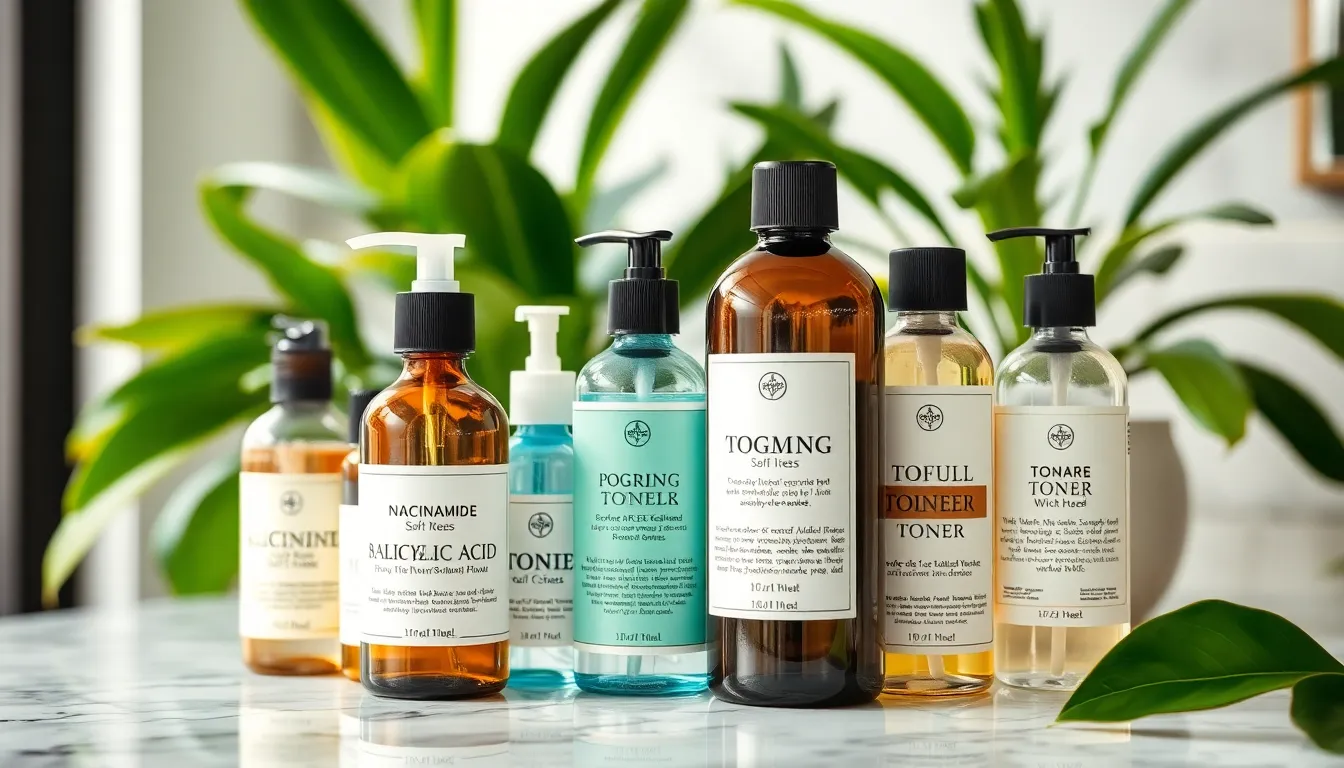
Toners serve as the perfect bridge between cleansing and moisturizing, helping to balance pH levels while tightening pores for a refined complexion. These essential products control shine by removing residual impurities and preparing your skin for the next steps in your routine.
Salicylic Acid Toners for Exfoliation
Salicylic acid toners deliver powerful beta-hydroxy acid exfoliation that penetrates deep into pores to dissolve excess oil and dead skin cells. This ingredient works particularly well for oily skin because it’s oil-soluble, allowing it to cut through sebum and unclog pores effectively. Regular use helps reduce blackheads and whiteheads while preventing future breakouts from forming.
We recommend starting with a 0.5% to 2% salicylic acid concentration to avoid over-exfoliation. Apply these toners 2-3 times per week initially, then gradually increase frequency as your skin builds tolerance. Look for formulations that include hydrating ingredients like hyaluronic acid to prevent excessive dryness.
Niacinamide Toners for Oil Control
Niacinamide toners regulate sebum production at the source, helping to minimize the appearance of enlarged pores while reducing overall oiliness. This form of vitamin B3 works by strengthening the skin barrier and improving elasticity, which naturally leads to tighter-looking pores. Studies show that 5% niacinamide can reduce oil production by up to 20% within four weeks of consistent use.
These toners also provide anti-inflammatory benefits that calm redness and irritation associated with acne-prone skin. We’ve found that niacinamide pairs well with other active ingredients, making it an excellent choice for layering with salicylic acid or retinoids. Apply these gentle toners twice daily after cleansing for optimal oil control results.
Witch Hazel Toners for Natural Astringent Properties
Witch hazel toners offer natural astringent benefits that immediately tighten pores and reduce excess oil without harsh chemicals. This botanical extract contains tannins that help constrict pore openings while removing residual dirt and makeup that cleansers might miss. The natural astringent properties make witch hazel particularly effective for controlling midday shine.
Choose alcohol-free witch hazel formulations to avoid disrupting your skin’s natural moisture barrier. These toners work best when applied with a cotton pad, allowing you to physically remove impurities while delivering the astringent benefits. We suggest using witch hazel toners in the morning to create a smooth base for makeup application and oil control throughout the day.
Targeted Serums That Address Oily Skin Concerns
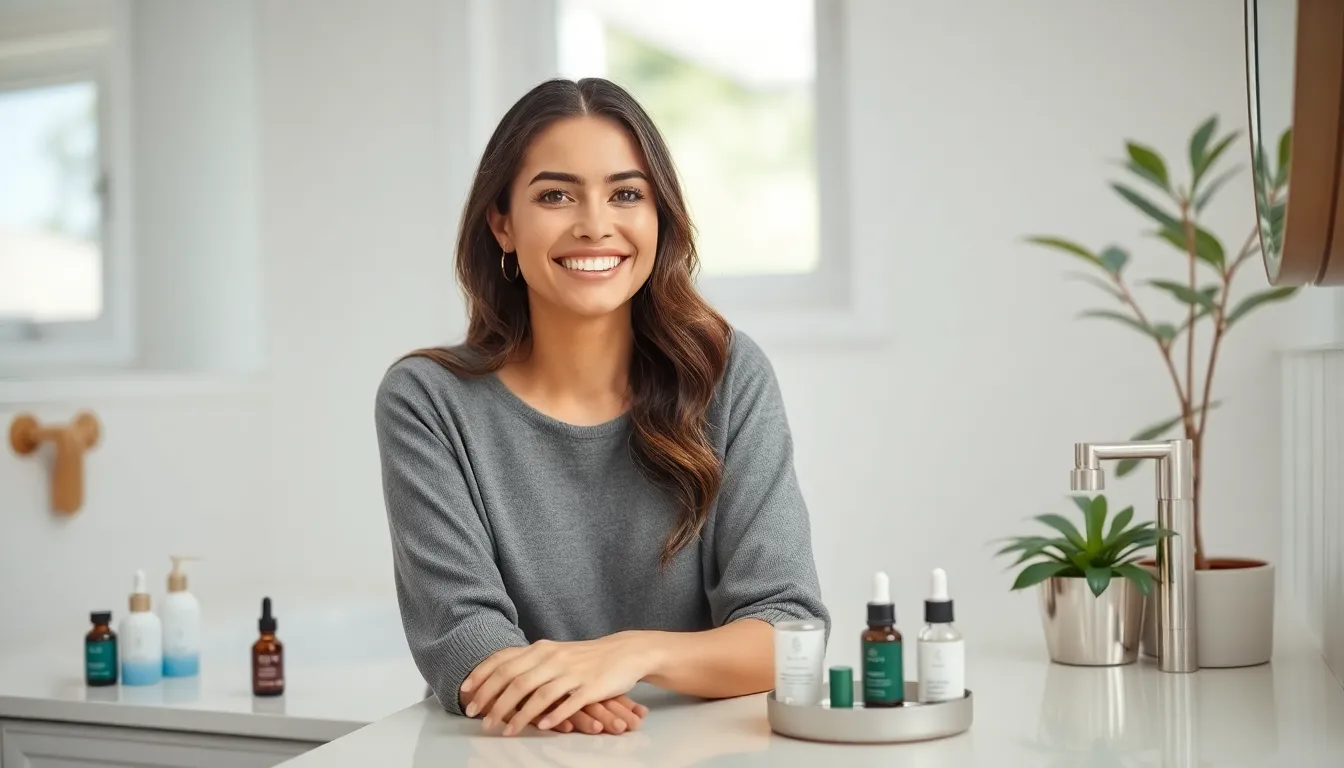
Serums formulated specifically for oily skin deliver concentrated active ingredients that regulate sebum production and address multiple concerns simultaneously. We’ve identified the most effective serum categories that work synergistically with your existing cleansing and toning routine.
Retinol Serums for Texture Improvement
Retinol serums transform oily skin by promoting cellular turnover and refining overall texture. These powerful formulations minimize the appearance of enlarged pores while preventing future congestion that commonly affects oily skin types. We recommend applying retinol serums exclusively at night to maximize their effectiveness.
Cell renewal accelerates with consistent retinol use, revealing smoother skin and reducing the uneven texture that often accompanies excess oil production. Fine lines and surface irregularities improve significantly as the active ingredient works to resurface the skin. Daily sun protection becomes essential when incorporating retinol into your routine, as increased photosensitivity occurs with regular use.
Vitamin C Serums for Brightening
Vitamin C serums combat the dullness and hyperpigmentation that frequently develop alongside oily skin concerns. These antioxidant-rich formulations brighten post-acne marks without adding unwanted oiliness to your complexion. We’ve found that vitamin C serums provide dual benefits by supporting skin barrier function while delivering visible brightening results.
Antioxidant protection shields oily skin from environmental damage that can worsen existing concerns. Post-inflammatory hyperpigmentation fades more rapidly with consistent vitamin C application, revealing a more even skin tone. Morning application works best for vitamin C serums, allowing the antioxidant benefits to protect your skin throughout the day.
Hyaluronic Acid Serums for Hydration
Hyaluronic acid serums provide essential hydration that oily skin requires without contributing to greasiness or pore congestion. These lightweight formulations attract and retain moisture within the skin, preventing the compensatory oil production that occurs when skin becomes dehydrated. We emphasize that proper hydration actually helps regulate excess sebum rather than exacerbating oily conditions.
Moisture retention improves dramatically with hyaluronic acid application, creating a plump, healthy appearance without heaviness. Dehydration-induced oil overproduction decreases as the skin maintains optimal hydration levels throughout the day. Application works best on slightly damp skin, allowing the hyaluronic acid to capture and lock in maximum moisture.
Lightweight Moisturizers That Hydrate Without Clogging Pores
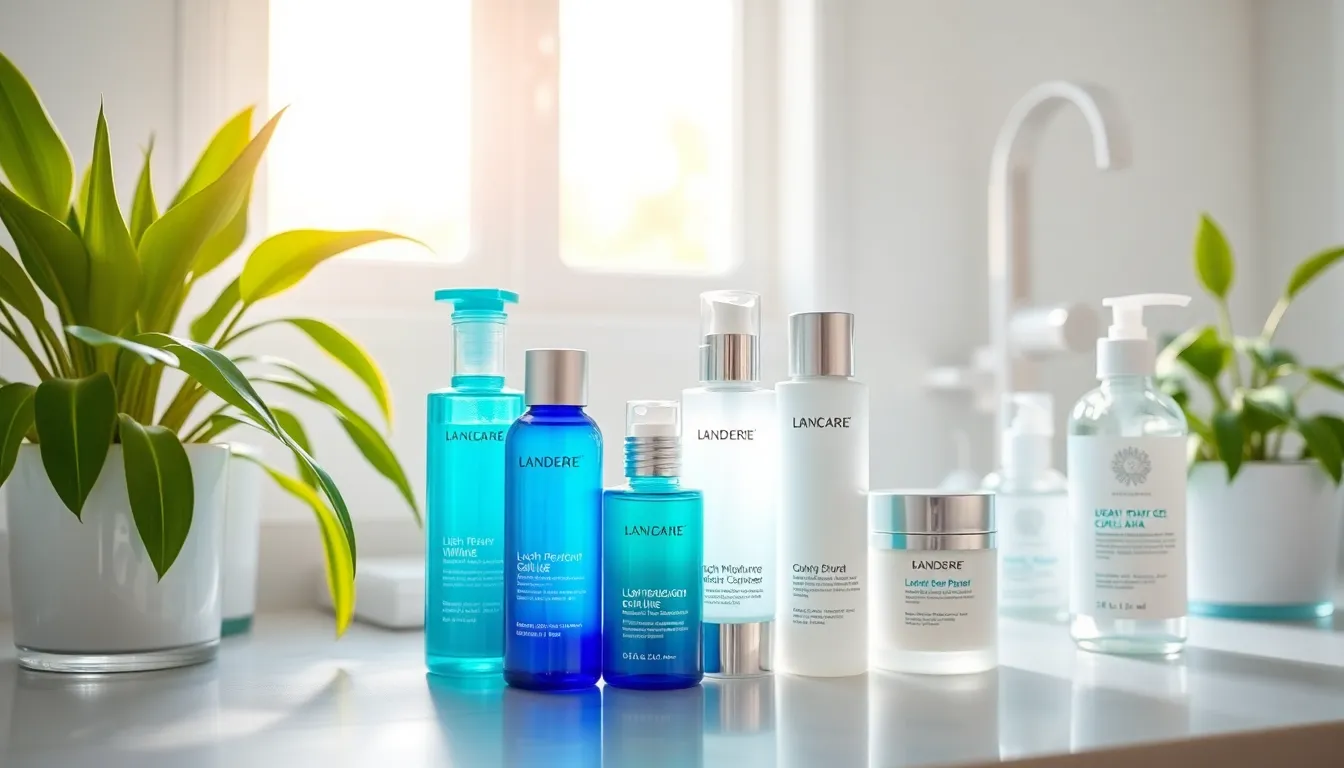
Finding the perfect moisturizer for oily skin requires products that deliver essential hydration while preventing pore congestion. We’ve identified key categories that balance moisture without adding unwanted shine or heaviness to your skincare routine.
Water-Based Moisturizers for Daily Use
Gel moisturizers provide the ideal solution for oily skin types seeking daily hydration without greasiness. These water-based formulas absorb quickly into skin, delivering moisture through a lightweight texture that won’t leave residue on your face.
CeraVe Oil Control Moisturizing Gel-Cream combines gel and cream textures to offer comprehensive hydration with ceramides, hyaluronic acid, and oil-absorbing technology that minimizes shine throughout the day. This dual-texture approach ensures your skin receives adequate moisture while controlling excess sebum production.
Embryolisse Mattifying Moisturizer features glycerin for optimal hydration and turmeric extract for natural brightening effects. Its lightweight, oil-absorbing formula works exceptionally well under makeup, creating a smooth base that helps foundation stay put longer.
Water-based formulations refresh skin without clogging pores, making them perfect for morning routines when you need reliable hydration that won’t interfere with subsequent skincare steps or makeup application.
Gel Moisturizers for Summer Months
Summer weather demands moisturizers that can handle increased heat and humidity while maintaining skin balance. Gel moisturizers excel during warmer months due to their lightweight, non-greasy texture that provides cooling relief.
These formulations help maintain proper hydration levels while actively controlling shine, making them essential for hot weather conditions when traditional creams might feel too heavy. Gel textures offer immediate skin refreshment upon application, creating a pleasant cooling sensation that’s particularly welcome during summer heat.
Summer-exact gel moisturizers work by delivering water-based hydration that evaporates excess moisture while locking in essential nutrients. This process prevents the sticky, uncomfortable feeling that often accompanies heavier moisturizers during humid conditions.
Night Moisturizers with Active Ingredients
Nighttime presents the perfect opportunity to incorporate active ingredients that work while your skin repairs itself during sleep. CeraVe Moisturizers often include beneficial compounds like niacinamide and hyaluronic acid, which improve skin texture and provide deep hydration overnight.
Niacinamide helps regulate sebum production while you sleep, reducing morning shine and improving overall skin elasticity. Hyaluronic acid works to attract and retain moisture without adding greasiness, creating plumper, more balanced skin by morning.
EltaMD AM Therapy Facial Moisturizer demonstrates how morning formulations can be adapted for nighttime use with enhanced active ingredients. These formulations provide extended contact time for ingredients like niacinamide to deliver maximum skin benefits.
Active ingredient combinations work synergistically during nighttime hours when skin cell turnover naturally increases, allowing for deeper penetration and more effective results than daytime applications.
Effective Exfoliants That Unclog Pores and Smooth Texture
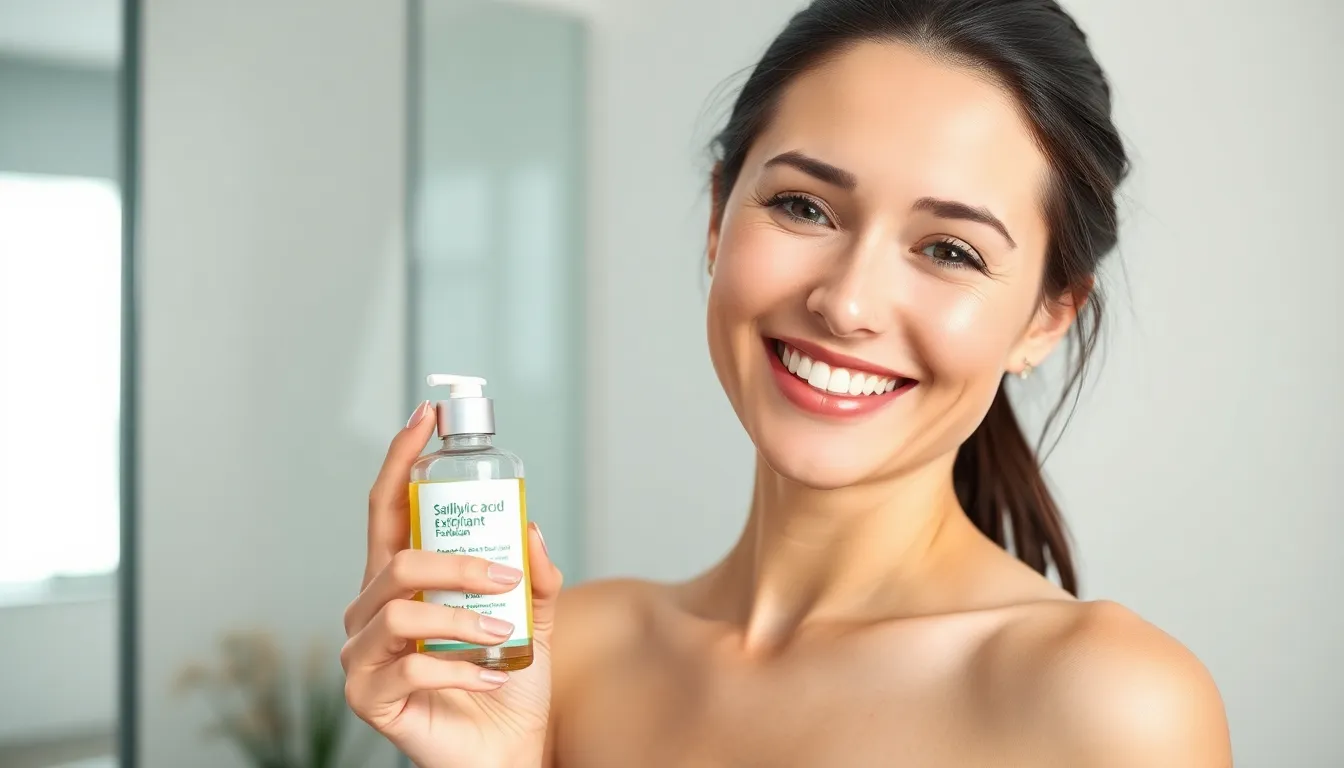
Exfoliation becomes crucial for oily skin management since dead skin cells can mix with excess sebum to create stubborn pore blockages. Regular removal of these surface layers helps prevent breakouts while smoothing skin texture for a clearer complexion.
Chemical Exfoliants with AHA and BHA
Chemical exfoliants with alpha hydroxy acids (AHA) like glycolic acid dissolve dead skin cells on the surface while improving overall skin texture. Glycolic acid penetrates deeply to encourage cellular turnover and reduce the appearance of enlarged pores that commonly affect oily skin types.
Beta hydroxy acids (BHA) like salicylic acid work differently by penetrating oil-filled pores to dissolve sebum and debris from within. Salicylic acid’s oil-soluble nature makes it particularly effective for oily skin since it can reach deeper into congested pores than water-based AHAs.
Daily use of BHA products helps maintain clearer pores without the irritation that often comes with physical scrubbing. Start with 2% salicylic acid formulations applied every other evening to allow your skin to adjust to the increased cell turnover rate.
Physical Exfoliants for Weekly Use
Physical scrubs with gentle exfoliating particles provide immediate smoothing effects when used once or twice weekly on oily skin. These formulations work by manually removing surface debris and dead skin cells that can contribute to dull-looking complexions.
Overuse of physical exfoliants can irritate oily skin and trigger increased oil production as your skin tries to compensate for the disruption. Limit physical exfoliation to twice per week maximum and choose products with rounded particles rather than sharp crystals that might create micro-tears.
Apply physical exfoliants to damp skin using gentle circular motions for 30-60 seconds before rinsing thoroughly with lukewarm water. Focus on areas where oil and debris tend to accumulate most, such as the T-zone and around the nose.
Enzyme Exfoliants for Sensitive Oily Skin
Enzyme-based exfoliators containing papaya or pineapple enzymes offer the gentlest approach to removing dead skin cells without harsh scrubbing or potential irritation. Papain from papaya and bromelain from pineapple naturally break down protein bonds that hold dead skin cells together.
These formulations work particularly well for sensitive oily skin that can’t tolerate daily chemical exfoliants or regular physical scrubbing. Enzyme masks typically require 5-10 minutes of contact time to effectively dissolve surface buildup without causing redness or inflammation.
Weekly enzyme treatments help maintain smooth skin texture while supporting the natural renewal process that keeps pores clear and minimizes shine. Look for enzyme products that also contain soothing ingredients like aloe vera to counteract any potential sensitivity from the active enzymes.
Sunscreen Options That Won’t Leave Your Skin Greasy

Protecting oily skin from harmful UV rays becomes challenging when traditional sunscreens leave behind unwanted shine and greasiness. We’ve identified three key categories of sunscreen formulations that provide excellent protection while maintaining a comfortable, non-greasy finish for oily skin types.
Mineral Sunscreens for Sensitive Skin
Mineral sunscreens create a physical barrier against UV rays without overwhelming sensitive oily skin. These formulations contain zinc oxide or titanium dioxide as active ingredients that sit on top of the skin rather than penetrating into pores. Physical barriers work immediately upon application and don’t require waiting time before sun exposure.
Modern mineral sunscreens have evolved beyond the thick, white formulas of the past. Micronized mineral particles now blend seamlessly into the skin while providing broad spectrum protection. These gentle formulations reduce the risk of irritation and breakouts that can occur with chemical alternatives.
Zinc oxide offers superior protection against both UVA and UVB rays while providing natural anti-inflammatory benefits. Titanium dioxide complements zinc oxide by reflecting harmful rays away from the skin’s surface. Both minerals work together to create an effective shield without clogging pores or triggering excess oil production.
Chemical Sunscreens with Matte Finish
Chemical sunscreens absorb UV radiation and convert it to heat energy that dissipates from the skin. These lightweight formulations often feature oil-absorbing ingredients that control shine throughout the day. Matte finish sunscreens typically include silica or other mattifying agents that help control sebum production.
Advanced chemical formulations penetrate quickly into the skin without leaving residue or stickiness. These products work by creating an invisible protective layer that doesn’t interfere with makeup application or daily skincare routines. Chemical sunscreens generally feel lighter on the skin compared to mineral alternatives.
Oil-free and non-comedogenic labels ensure these products won’t contribute to clogged pores or breakouts. Water-resistant formulations maintain their effectiveness even during sweating or swimming activities. Chemical sunscreens provide consistent coverage without the need for frequent reapplication in normal daily activities.
Tinted Sunscreens for Added Coverage
Tinted sunscreens combine sun protection with light coverage to even out skin tone and reduce shine. These multi-purpose products eliminate the need for separate foundation or concealer while providing broad spectrum protection. Color-matching technology ensures natural-looking coverage across different skin tones.
Pigmented sunscreens often contain iron oxides that provide additional protection against visible light and blue light exposure. These ingredients help prevent hyperpigmentation and age spots while maintaining an even complexion throughout the day. Tinted formulations typically offer buildable coverage that can be layered for desired opacity.
Lightweight tinted sunscreens blend seamlessly into oily skin without creating a heavy or cakey appearance. These products often include oil-absorbing ingredients that help control shine while providing natural-looking coverage. Many tinted sunscreens feature long-wearing formulas that resist fading or transferring throughout the day.
Spot Treatments That Target Breakouts and Blemishes
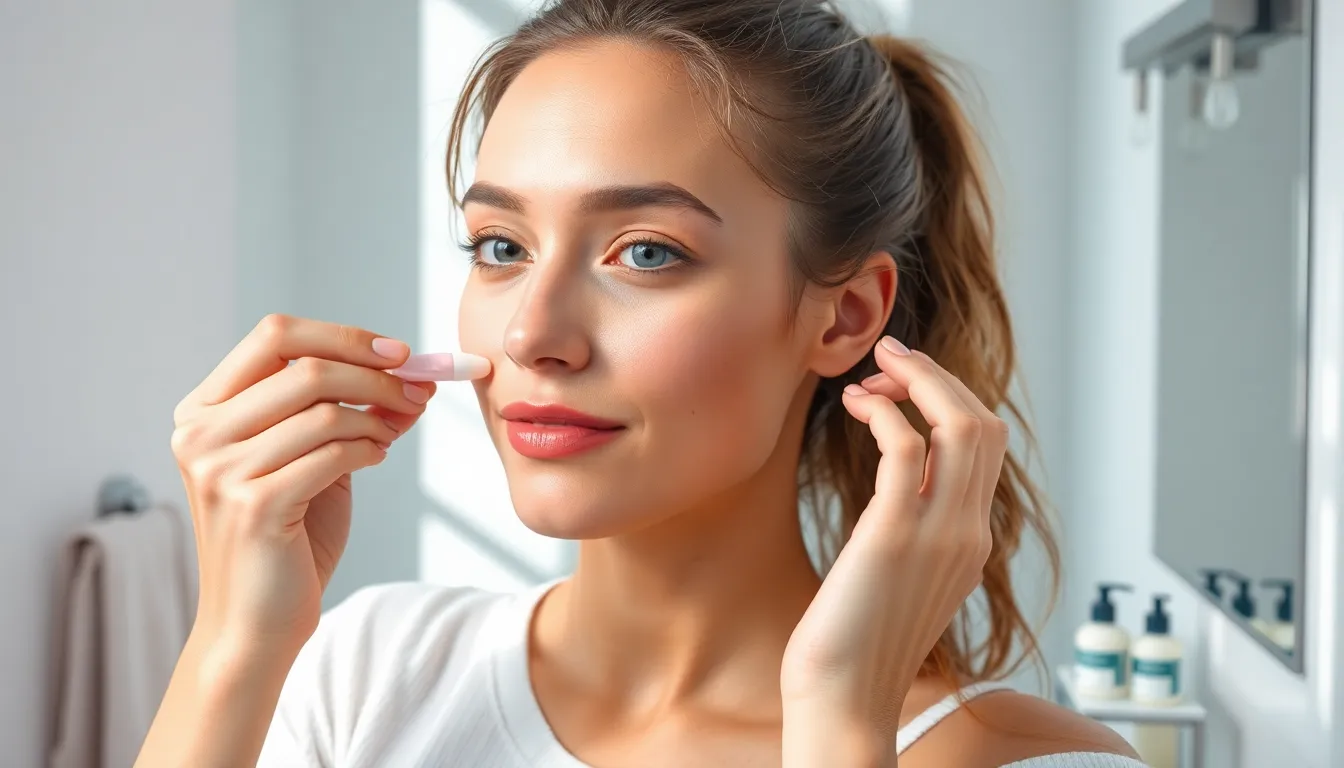
While comprehensive skincare routines create the foundation for healthy oily skin, targeted spot treatments deliver concentrated power where you need it most. These specialized products work directly on problematic areas to reduce inflammation and accelerate healing.
Benzoyl Peroxide Treatments for Active Acne
Benzoyl peroxide stands as the gold standard for treating active breakouts due to its powerful antibacterial properties. This ingredient penetrates deep into pores to eliminate acne-causing bacteria while reducing inflammation and preventing new blemishes from forming.
Reset Benzoyl Peroxide Acne Treatment Mask represents one of the most effective options for intensive acne treatment. We recommend starting with lower concentrations (2.5% to 5%) to assess your skin’s tolerance before progressing to stronger formulations.
Apply benzoyl peroxide treatments only to affected areas rather than your entire face to minimize potential dryness. Leave the product on for the recommended time before rinsing, and always follow with a gentle moisturizer to maintain your skin’s barrier function.
Watch for initial redness or peeling, which typically subsides as your skin adjusts to the treatment. Start with every other day application to build tolerance, then gradually increase frequency based on your skin’s response.
Tea Tree Oil Products for Natural Treatment
Tea tree oil offers a natural alternative to synthetic acne treatments through its antiseptic and anti-inflammatory properties. This botanical ingredient reduces breakouts without the harsh side effects often associated with stronger chemical treatments.
Skinceuticals Simply Clean Gel Refining Cleanser incorporates tea tree oil alongside L-lactic acid and peppermint oil for comprehensive pore refinement. This combination helps minimize oil production while improving overall skin texture through gentle exfoliation.
Look for products containing 5% to 10% tea tree oil concentration for optimal effectiveness without excessive irritation. Higher concentrations may cause sensitivity, especially when you’re first introducing this ingredient to your routine.
Apply tea tree treatments to clean skin using a cotton swab or your fingertips, focusing on areas prone to breakouts. We suggest patch testing new tea tree products on a small skin area before applying to your entire face.
Sulfur-Based Treatments for Stubborn Blemishes
Sulfur-based products excel at treating persistent blemishes that resist other treatment methods. This mineral ingredient works by reducing sebum production and promoting gentle exfoliation to prevent future breakouts from developing.
These treatments particularly benefit those dealing with deep, cystic acne or recurring blemishes in exact areas. Sulfur draws out impurities from within pores while creating an environment that discourages bacterial growth.
Most sulfur spot treatments contain 3% to 10% sulfur concentration, often combined with other beneficial ingredients like zinc oxide or salicylic acid. We recommend applying these products as overnight treatments to maximize their effectiveness.
Expect a slight drying effect during the first few applications, which indicates the treatment is working to reduce excess oil in targeted areas. Follow up with a lightweight moisturizer on treated areas to prevent over-drying and maintain skin balance.
Weekly Masks That Deep Clean and Refine Pores
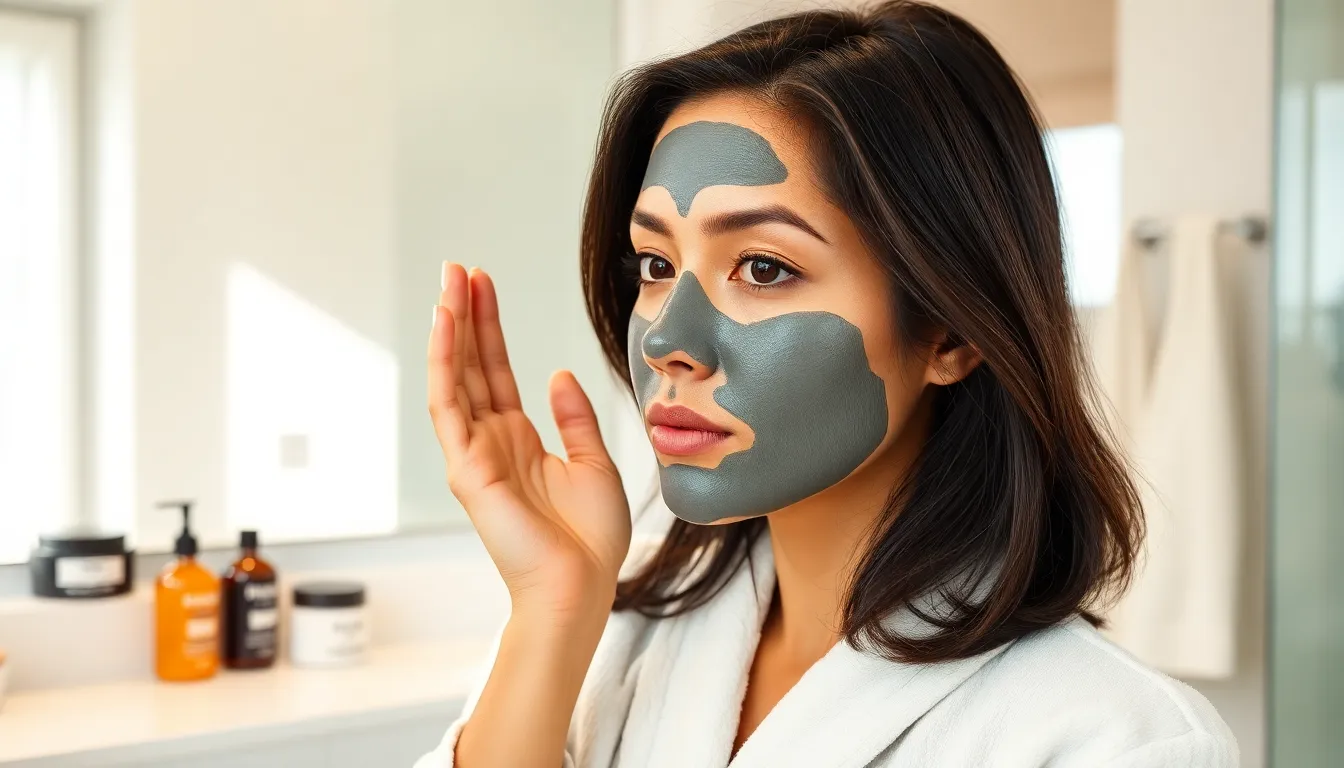
Deep cleaning masks provide intensive treatment for oily skin by targeting stubborn pore blockages and excess sebum production. Weekly applications help maintain clear, refined pores while supporting your daily skincare routine.
Clay Masks for Oil Absorption
Clay masks excel at drawing out excess oil and impurities from deep within pores. L’Oréal Paris Pure-Clay Detox & Brighten Face Mask effectively absorbs sebum while purifying the skin’s surface.
Bentonite clay creates a magnetic pull that attracts dirt and oil from congested pores. French green clay provides gentle exfoliation while tightening enlarged pores. Kaolin clay offers the mildest option for sensitive oily skin types.
Application involves spreading an even layer over clean skin and leaving for 10-15 minutes until dry. Removing with warm water helps prevent over-drying while maintaining skin’s natural moisture barrier.
Charcoal Masks for Detoxification
Charcoal masks work like magnets to pull toxins and impurities from pore walls. Origins Clear Improvement Active Charcoal Mask helps detoxify the skin by drawing out deep-seated pollutants and excess sebum.
Activated charcoal binds to dirt particles and removes them from pore openings. Bamboo charcoal provides additional antibacterial properties that prevent future breakouts. White charcoal offers gentler detoxification for daily use.
Weekly applications help maintain clear pores while preventing the buildup of environmental pollutants. Combining with clay ingredients enhances the mask’s oil-absorbing capabilities.
Multi-Acid Masks for Intensive Treatment
Multi-acid masks deliver professional-grade exfoliation through alpha and beta hydroxy acids. Dr. Dennis Gross Skincare Alpha Beta Universal Daily Peel uses intensive acid combinations to exfoliate and treat oily skin concerns.
Glycolic acid penetrates deep into pores to dissolve dead skin cells and excess oil. Salicylic acid targets blackheads and whiteheads while reducing pore size. Lactic acid provides gentle resurfacing without irritation.
Starting with once-weekly applications allows skin to adjust to the intensive treatment. Gradual increases to twice weekly help maintain consistent exfoliation without over-processing. Always following with sunscreen protection prevents acid-induced photosensitivity.
Building Your Oily Skin Care Routine
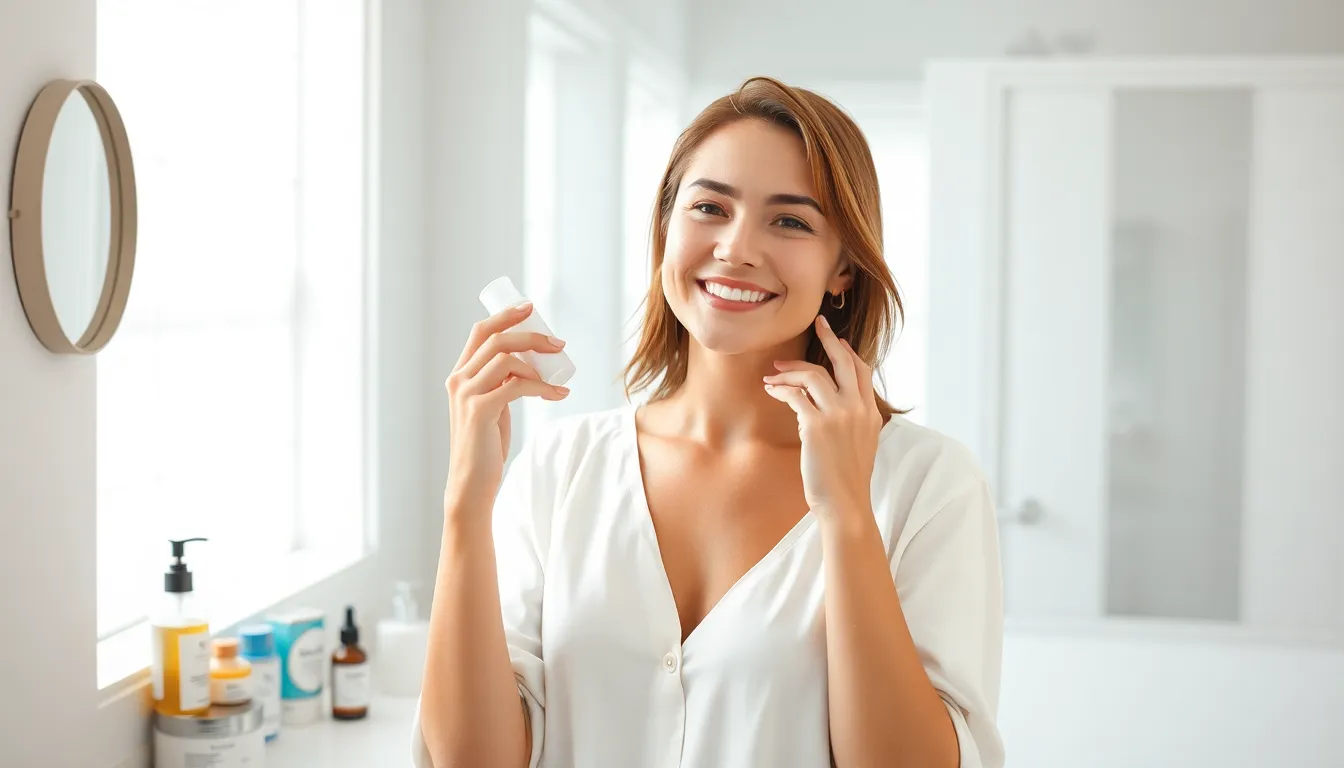
Creating an effective skincare routine for oily skin requires strategic timing and product selection. We’ll walk you through a comprehensive approach that manages oil production while maintaining healthy skin balance.
Morning Routine Steps
Cleansing forms the foundation of our morning routine using gentle, oil free cleansers like La Roche-Posay Effaclar Purifying Foaming Gel Cleanser to remove overnight buildup without stripping natural moisture[4]. Foaming gel formulations effectively eliminate dirt and excess sebum while preserving the skin’s protective barrier.
Toning comes next with products like Paula’s Choice Skin Balancing Pore-Reducing Toner to balance pH levels and minimize visible pores[4]. Balancing toners help prepare the skin for subsequent products while reducing shine throughout the day.
Moisturizing requires lightweight, non-comedogenic formulas such as CeraVe AM Facial Moisturizing Lotion that hydrate without adding extra oil[3]. AM moisturizers provide essential hydration while creating a smooth base for makeup application.
Sunscreen application completes our morning routine with broad-spectrum protection that shields skin from UV damage. Daily sun protection prevents hyperpigmentation and premature aging that can worsen oily skin concerns.
Evening Routine Essentials
Double cleansing begins our evening routine using the same gentle cleanser from morning to remove makeup, sunscreen, and daily pollutants. Evening cleansing prepares the skin to absorb treatment products more effectively.
Serum treatment involves applying niacinamide containing products to reduce inflammation and improve overall skin texture[3]. Niacinamide serums help regulate sebum production while strengthening the skin’s natural barrier function.
Night moisturizing utilizes products like CeraVe PM Facial Moisturizing Lotion that contain hyaluronic acid and niacinamide for overnight repair[5]. PM formulations work during the skin’s natural regeneration process to restore balance and hydration.
Treatment application includes any prescribed or targeted spot treatments for active breakouts or exact skin concerns. Evening applications allow active ingredients to work without interference from sun exposure or daily activities.
Weekly Treatment Schedule
Chemical exfoliation should occur once or twice weekly using BHA or AHA products to remove dead skin cells and prevent pore congestion. Exfoliating treatments help maintain clearer pores without the irritation of daily use.
Clay masking happens once weekly to absorb excess oil and purify the skin through deep cleaning action. Clay masks provide intensive treatment for managing sebum production and reducing shine.
Pore refining treatments can be incorporated weekly using multi acid formulations or enzyme based products for gentle yet effective results. Weekly treatments complement our daily routine by addressing exact concerns like enlarged pores or stubborn blackheads.
Skin assessment should occur weekly to evaluate routine effectiveness and make necessary adjustments based on seasonal changes or skin responses. Regular evaluation ensures our routine continues meeting our skin’s evolving needs.
Conclusion
Managing oily skin doesn’t have to be overwhelming when you have the right products and knowledge. We’ve covered everything from gentle cleansers to targeted treatments that work together to control excess oil production while maintaining your skin’s natural balance.
Remember that consistency is key to seeing real results. Start with a basic routine and gradually introduce new products to avoid overwhelming your skin. What works for others might not work for you so pay attention to how your skin responds and adjust accordingly.
The most important takeaway is that oily skin needs hydration and gentle care – not harsh stripping. With the right combination of products and a well-structured routine you can achieve the clear confident complexion you’ve been working toward.
Frequently Asked Questions
What causes oily skin?
Oily skin is primarily caused by genetics, hormonal fluctuations, and environmental factors. Your sebaceous glands produce excess sebum (natural oil) due to these influences. Hormonal changes during puberty, menstruation, or stress can trigger increased oil production. Environmental factors like humidity, heat, and certain skincare products can also stimulate your skin to produce more oil than necessary.
How can I tell if I have oily skin?
Signs of oily skin include visible shine throughout the day, especially in the T-zone (forehead, nose, chin), enlarged or prominent pores, and frequent breakouts or blackheads. Your skin may feel greasy to the touch within hours of cleansing, and makeup tends to slide off or fade quickly. You might also notice that blotting papers pick up significant amounts of oil from your face.
Should I skip moisturizer if I have oily skin?
No, skipping moisturizer is a common misconception that can actually worsen oily skin. When you don’t moisturize, your skin may produce even more oil to compensate for the lack of hydration. Instead, choose lightweight, water-based, or gel moisturizers that hydrate without clogging pores. Look for non-comedogenic formulas that won’t contribute to breakouts while maintaining your skin’s natural barrier.
What type of cleanser is best for oily skin?
The best cleansers for oily skin include gel-based, foaming, and oil cleansers. Gel cleansers like CeraVe Foaming Facial Cleanser provide lightweight daily cleansing while maintaining pH balance. Foaming cleansers offer deep cleaning to remove excess sebum effectively. Surprisingly, oil cleansers can help balance natural oils and prevent rebound oil production. Avoid harsh cleansers that strip your skin completely.
How often should I exfoliate oily skin?
For oily skin, use chemical exfoliants with BHA (like salicylic acid) daily, as they penetrate pores to dissolve excess oil and dead skin cells. Physical exfoliants should be limited to once weekly to avoid irritation and increased oil production. Enzyme exfoliants offer a gentle alternative for sensitive oily skin. Over-exfoliating can damage your skin barrier and trigger more oil production.
What ingredients should I look for in oily skin products?
Key ingredients for oily skin include salicylic acid (BHA) for pore penetration and oil control, niacinamide for regulating sebum production, retinol for cellular turnover and pore refinement, and hyaluronic acid for lightweight hydration. Benzoyl peroxide helps treat active breakouts, while witch hazel provides natural astringent properties. Avoid heavy oils and comedogenic ingredients that can clog pores.
Can I use face masks on oily skin?
Yes, weekly masks are beneficial for oily skin maintenance. Clay masks absorb excess oil and impurities, charcoal masks provide detoxification, and multi-acid masks offer intensive treatment for pore refinement. Use these masks 1-2 times per week to avoid over-drying your skin. Always follow up with a lightweight moisturizer to maintain your skin’s hydration balance after masking.
What’s the best sunscreen for oily skin?
Choose sunscreens specifically formulated for oily skin, including mineral sunscreens that create a physical barrier without greasiness, chemical sunscreens with matte finishes that control shine, and tinted sunscreens that provide coverage while protecting from UV rays. Look for non-comedogenic, oil-free formulas that won’t clog pores or leave a greasy residue. Gel-based sunscreens are often ideal for oily skin types.
How should I structure my oily skin routine?
Morning routine: gentle cleanser, balancing toner, lightweight moisturizer, and sunscreen. Evening routine: double cleansing, niacinamide serum, and night moisturizer with active ingredients. Include weekly treatments like chemical exfoliation, clay masks, and pore-refining treatments. Regularly assess your skin’s needs and adjust products accordingly. Consistency is key to managing oily skin effectively while maintaining healthy skin barrier function.

